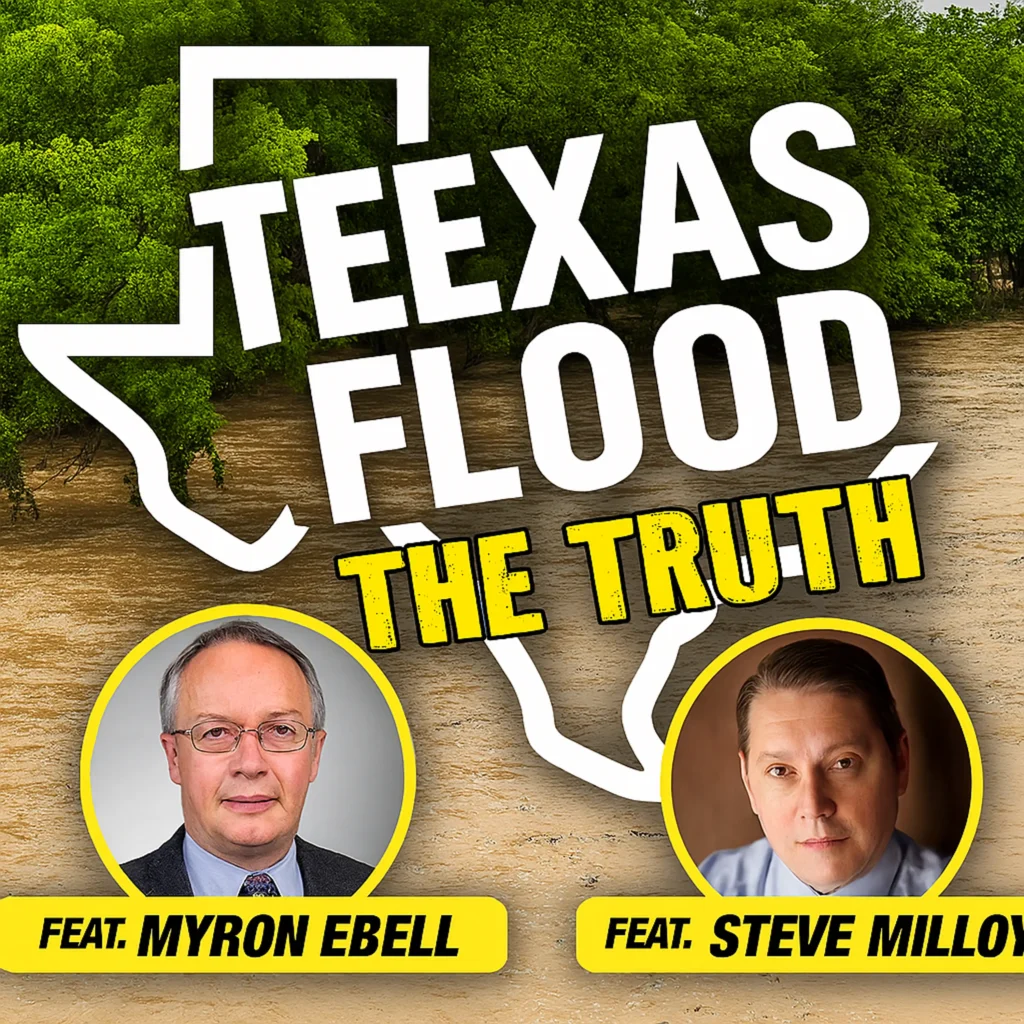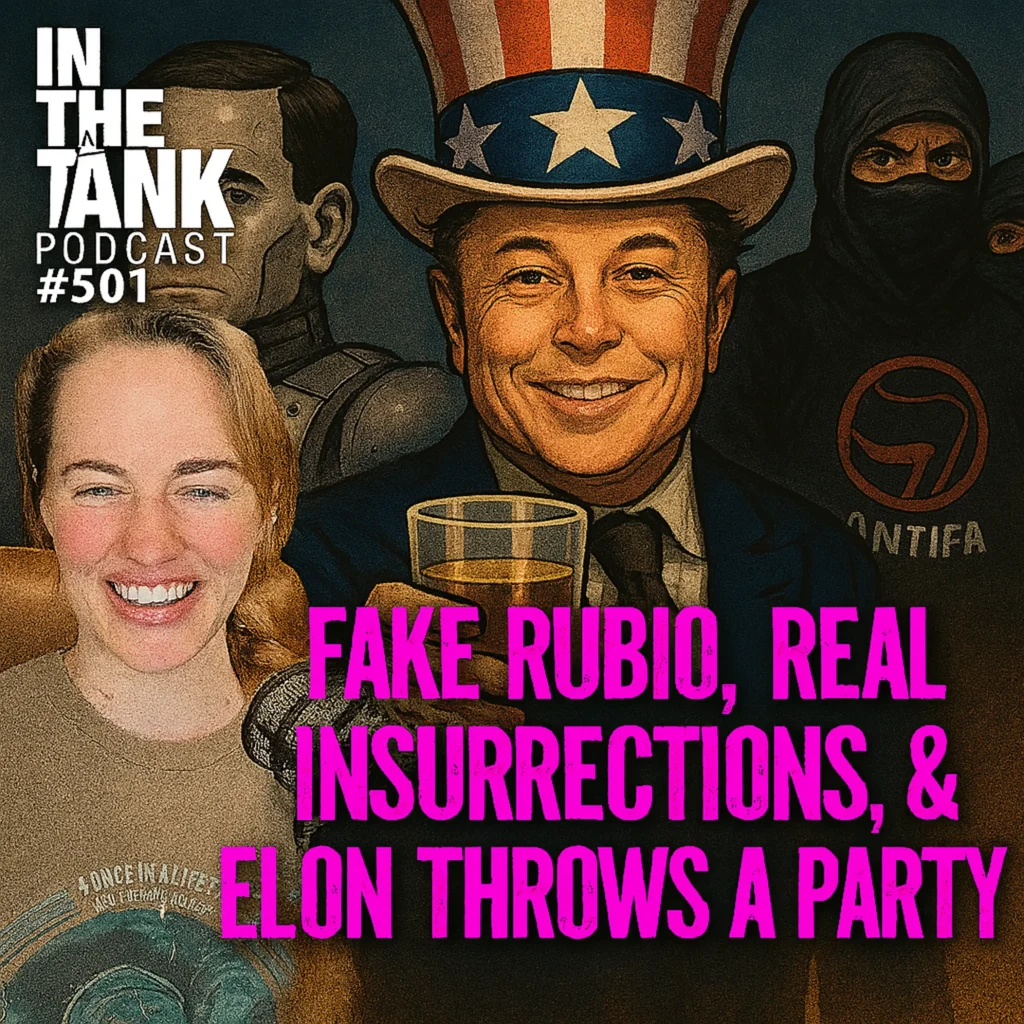Life, Liberty, Property #109: Shooting for Fairness—but for Whom?
Forward this issue to your friends and urge them to subscribe.
Read all Life, Liberty, Property articles here, and full issues here and here.
IN THIS ISSUE:
- Shooting for Fairness—but for Whom?
- Video of the Week: Fake Rubio, Real Insurrection, and Elon Throws a Party? – In The Tank #501
- Invading the Confessional
- A Federal Budget … Surplus
- Cartoon
- Bonus Video of the Week: The Cultural Shift is Leaving Hollywood Behind — In the Tank Podcast #500
Shooting for Fairness—but for Whom?

A mass shooting in downtown Indianapolis, Indiana over the Fourth of July weekend put the city on edge and politicians under increasing scrutiny in the wake of that and several other such incidents. In this case, two people were killed. Several others were shot and survived.
The murder victims and the four people charged with illegally possessing firearms in the case were all between the ages of 13 and 17. The five who were shot and survived were between the ages of 16 and 21.
That was the second mass shooting in downtown Indianapolis in the past few weeks. Indianapolis’s crime rate is in the top 3 percent of all U.S. cities and was nearly triple the U.S. average in 2023. City-Data.com provides some numbers on the subject:

The number of murders in the city of approximately 879,000 people rose from 92 in 2010 to a peak of 246 in 2021 and was 168 in 2023. The city’s population remained steady over those years.
Abdul-Hakim Shabazz, an Indianapolis-based political commentator and unsuccessful contender for the Republican nomination for mayor in 2023, describes the situation as “The Purge: Circle Center Edition,” after the action-horror film series and a downtown Indianapolis gathering place which will soon be torn down after having been abandoned as crime and public disorder have risen in recent years:
This was the second mass shooting downtown in just weeks and the third recent shooting involving teenagers with firearms. We’re not trending—we’re unraveling. [Emphasis in original.]
Downtown Indy has become a late-night playground for lawlessness. … And yet we pretend like it’s a mystery why families, conventions, and businesses are quietly fleeing out the back door.
The pretense results, of course, from Progressive-left concerns about the “disparate impact” of crime-control efforts, which, to the obvious surprise of dimwits, sweep up a greater percentage of the population from groups of people disproportionately disposed to commit crimes. Shabazz writes,
Now the excuse-makers are already warming up: “If we enforce curfew, it’ll disproportionately affect Black teens.” Yeah. Probably. Because that’s who’s downtown at 1:30 a.m., getting shot or doing the shooting.
A quick tour of downtown Indianapolis on any particular night (make sure to wear your bulletproof helmet and body armor) easily confirms that the pre-BLM (2013) curfew-arrest rates for visibly differing populations accorded with reality and that the law is not being enforced today. On the night of July 4, police officers “made at least 20 arrests before the downtown shooting took place,” Indianapolis TV station Fox 59 reported. However, there were “hundreds of unsupervised kids down here,” Indianapolis Metropolitan Police Chief Chris Bailey told the press.
There were hundreds of police officers on duty that night, Fox 59 reports:
“I was down there last night,” Bailey said. “I took runs with our officers all night. And we have hundreds of officers out throughout the weekends who show up to ensure the safety of those enjoying our downtown. And I appreciate their willingness to protect our city, and they are equally as frustrated as all of us are right now. They ran toward danger, again. As others were fleeing the gunshots, our officers ran toward them. They are the best of us, and I’m proud of their courage and commitment.
“But what I saw downtown, and what I’ve seen downtown over the last few weeks, is absolutely ridiculous. Lawlessness, disrespect, reckless behavior of people of all ages. It’s not something we should expect. I watched as bottle rockets were shot from the top of parking garages onto community members below. As roman candles were shot over people’s heads as the [Independence Day] fireworks were going on Monument Circle [a downtown landmark]. I saw people openly using narcotics, partying in parking lots, fighting. All the while, our officers chased them around downtown.”
“Hundreds of kids” breaking curfew, “hundreds of officers” on duty, and only 20 or so arrests, and those not necessarily for curfew violations (which suggests that few or none were in fact for that reason). Someone has told the Indianapolis police to go easy on arrests and to ignore curfew violations.
The reason for that decision is obvious, as Shabazz notes, and the consequences have been grave. The same is true across the country. “In 2018–2023, according to the CDC, blacks died by firearm homicide thirteen times as often per capita as whites,” columnist Steve Sailer noted in Taki’s Magazine in May of this year. The vast majority of those killings are committed by people of the same race as the victim.
The ubiquity of armed, low-self-control curfew breakers reflects widespread parental negligence and hikes up the danger level for those youths, their victims, and the city, Shabazz writes:
So here’s my follow-up: Where are the Black adults who are supposed to be raising these kids? You want equity? Start by making sure your children aren’t wandering city streets armed to the teeth in the middle of the damn night.
I’m not interested in locking kids up. I’m interested in keeping them alive. Curfew isn’t punishment—it’s protection. A 14-year-old with a loaded weapon after midnight doesn’t need a lecture on systemic oppression—he needs a guardian, a curfew, and some damn accountability.
And let me be clear: I’m a “weed and seed” guy. I believe in planting seeds—mentoring, prevention, second chances, economic opportunity. But the weeds? The weeds are out of control. If we don’t start pulling them up, they’re going to choke out everything worth saving.
Sympathy for the young curfew-violators and the parents who have to go to the local hoosegow to bail them out is perfectly understandable; refusal to enforce laws is irresponsible and inexcusable. Shabazz writes,
We have the laws. We just don’t use them. We have leaders. They just don’t lead. We have kids. And we’re losing them.
So here’s the deal: enforce the curfew. Drag the parents in if you have to. Every kid downtown past curfew gets picked up, no exceptions. You ask one question: “Where’s your adult?” And if nobody knows, then maybe—just maybe—the city needs to step in and be the adult.
Mayor [Joe] Hogsett. Council President [Vop] Osili. And every other official collecting a paycheck to manage this city: do your damn jobs. Or get out of the way before another kid ends up in a body bag.
This same story has been playing out in cities across the country since the mid-2010s mass movements to defund and disempower the police, and it is all based on this same shibboleth of disparate impact. Like Indianapolis, the city of Chicago typifies this trend, having experienced multiple shootings day after day after day in recent years, with numerous fatalities. Chicago Mayor Brandon Johnson removed an important lifesaving resource in September of last year by ending the city’s use of the ShotSpotter gunfire-detection system which pinpointed the places where victims lay dying. He did not want the public to know where the shootings are occurring.
The effort to hide the truth about lawbreaking so as to cover up differences in crime rates is deadly for those in groups with disproportionate numbers of criminals, writes Manhattan Institute Fellow Heather Mac Donald in City Journal:
The narrative that blacks are at elevated risk for “existing while black” is true, but not because whites are killing them. Their assailants are other blacks, which means that these black victims are of no interest to the race activists and to their media and political allies. …
The anarchy in American cities is carefully de-raced, whether the flash mobs that routinely maraud in shopping malls and down Chicago’s Magnificent Mile; the looters who plunder convenience stores and jewelry stores; or the Miami spring breakers who rape and kill. To name a suspect’s race when that suspect is black is virtually taboo, no matter the race of his victim. Let a white person assault or kill a black person, however, and the entire story will be about race.
This double standard and the fiction that blacks are under daily risk of their lives from whites do no one any good, least of all the victims of black crime.
The homicide death rate reversed previous declines after 2014 and rose at a record pace in the wake of the George Floyd riots of 2020 and consequent radical reductions in police presence and enforcement, as a graph by Sailer illustrates:

(Note that the high homicide death rate in 2001 was due to 9/11.)
Source: Steve Sailer
The increase in homicides has a “disparate impact” on people of the same race or ethnicity as the group committing those crimes, Sailer notes:

Source: Steve Sailer
It is only fair to conclude that we now have sufficient experience with this massive and delusional social experiment and have firmly established that these policies are stupid and destructive. Now cities across the nation must reverse course, to save lives, liberty, and property and reclaim our streets and other public areas for the people. Some have begun the process and are seeing positive results. There remains much to be done.
The right principles are clear. Fairness means that the government treats each individual according to what he or she does, not who he or she is, or who his or her parents or distant ancestors were. Policies directed toward equalizing arrest rates among various demographic groups distort law enforcement and sacrifice the public safety on the altar of racial identity.
Efforts to relieve “disparate impact” by preemptively absolving groups of people from the consequences of their actions invariably create enormous moral hazard. Such policies provide greater latitude to people who fall short of whatever positive potential they may have and who fail to obey moral and social norms, and they punish those who play by the rules and try to live productively, as Shabazz notes.
Withholding consequences because some categories of people are more likely to commit these offenses creates more crime and more victims, the latter typically also members of the groups the avoidance of disparate impact is supposedly intended to help.
Sources: Indy Politics; Fox 59, Indianapolis; City Journal; Steve Sailer; CWB Chicago

Video of the Week

After losing the presidential election and seeing the administrative state’s efforts steamrolled by Trump’s agenda, the left is ramping up its calls to violence—and even acting on them. Just in the last week, there were two attempts on the lives of ICE agents, resulting in injuries and deaths. Likewise, real “color revolution” insurrection plots are being staged by ex-USAID employees who believe they are the rightful government of the United States—not the president. Also, an AI impostor mimicked Marco Rubio in an effort to gain access to other high-level government officials, and Elon Musk has expressed interest in starting his own political party.

Invading the Confessional

The state of Washington now claims the power to require priests to break the confidentiality of the confessional. Columnist Jeff Jacoby writes at Pundicity:
[U]nder a new law signed by Governor Bob Ferguson and scheduled to take effect this month, priests and other clergy members will be obligated to share with law enforcement officials any information related to possible child abuse or neglect—even if that information was acquired during religious confession. If they fail to do so, they can be prosecuted and, if convicted, punished with up to 364 days in prison and a $5,000 fine.
This is an unusual intrusion into religious practices, Jacoby notes:
In nearly every US jurisdiction, members of the clergy (like other professionals who come into contact with children, such as teachers, doctors, nurses, social workers, and school coaches) are “mandated reporters” who must alert authorities if they suspect a child is endangered. But in 43 states, the law specifically carves out an exception for what is called the clergy-penitent privilege—a longstanding rule of evidence that bars governments from compelling a priest, minister, rabbi, or other religious leader to disclose information communicated to them in confidence by a congregant. Like a handful of other time-honored relationships—that between doctor and patient, for example, or between attorney and client, or between spouses—the clergy-penitent relationship is deemed so important to society, and is so dependent on absolute trust, that the law has traditionally shielded it from governmental intrusion.
The new law is aimed specifically at Christians and the Catholic church in particular, Jacoby observes:
The Evergreen State’s new law doesn’t infringe on the other privileged relationships. But it explicitly strips away the protection for clergy-penitent communications. Priests, ministers, and other clerics will now be legally bound to report possible abuse, even if that knowledge arises during a confession made in strict religious confidence. Pastors will be forced to choose between fulfilling their sacred obligations and risking a prison sentence—or obeying the new law and thereby violating a fundamental religious command. That flies in the face of the First Amendment, which forbids the state to impede the “free exercise” of religion.
And by leaving the attorney-client and other nonreligious privileges intact, the new law also flies in the face of common sense. As Eric Kniffin of the Ethics and Public Policy Center observes, the premise of Washington state’s new statutory language is that “it’s good for lawyers to keep confessions confidential for secular reasons, but it’s bad for priests to keep confessions secret for religious reasons.”
Five Washington-based Catholic bishops and several parish priests are suing the state in federal court over the law. The Becket Fund, co-counsel in the case, argues the new law violates the Free Exercise Clause of the First Amendment:
Churches and religious organizations have a right to live, teach, and govern in accordance with the tenets of their faith. When the government unjustly interferes in internal church affairs, the separation of church and state is threatened. The First Amendment ensures a church’s right to self-definition and free association.
The case is currently before the U.S. District Court for the Western District of Washington. It seems likely that the U.S. Supreme Court will see the bishops’ arguments favorably should the case end up there on appeal, given the high court’s recent decisions on religious liberty, free exercise, and establishment issues. The current justices are quite unpredictable, however, so there is no telling what they might rule in such a case.
Regarding the ethics of the matter, I think that any law that requires people to do the work of the police is unjustified, though of course knowingly refusing to help avert a vile and immensely damaging crime is a horrible choice to make, or to have to make.
The seal of the confessional has practical social value, however, in giving people a place to go to talk about their wrongdoings in a context that could activate the individual’s conscience. Obviously, the optimal outcome in such a situation would be that the perpetrator of the crime becomes penitent and confesses to the authorities. The likelihood of that becoming the norm seems dubious, however, given human nature.
In pushing its way into the confessional booth, the state of Washington has gone well beyond the proper authority of government, in my view. I am by no means certain that the Constitution forbids such a law, though I find the statute to be contemptible in applying only to religious organizations. That seems to me to be unconstitutional, and the current U.S. Supreme Court in recent years has repeatedly stricken down laws that place extra burdens on religious organizations or bar them from equal access to government benefits and protection.
Should the law stand, the church does have one highly honorable course of action: nonfatal martyrdom. A priest whom the government requires to break the seal of the confessional could refuse to do so and accept whatever consequences the government elected by the people has chosen to impose. In the present case, that could include a year in jail.
If that were to become commonplace, it would show the strength of the clergy’s faith, demonstrate the power of conscience, and affirm the dignity and decency of the church. It might also result in those laws being repealed.
Sources: Pundicity; The Becket Fund for Religious Liberty
NEW Heartland Policy Study
‘The CSDDD is the greatest threat to America’s sovereignty since the fall of the Soviet Union.’

A Federal Budget … Surplus

The U.S. government surprisingly ran a very rare budget surplus in June. The Epoch Times reports:
New data from the Treasury Department show that surging tariff revenues in June helped the U.S. government post an unexpected budget surplus of $27 billion, offering a rare fiscal bright spot amid persistently high federal deficits and suggesting that President Donald Trump’s tariff policies are becoming a significant source of government revenue.
After running a $316 billion deficit in May, the government recorded a surplus of just over $27 billion last month, according to data released on July 11 by the Treasury Department. The tariff windfall helped narrow the fiscal year-to-date deficit to $1.34 trillion—a slight 1 percent improvement from the same period last year. By contrast, June 2024 saw a $71 billion deficit.
The unexpected revenue increase from tariffs led the way:
A key driver of the improved balance was a record-breaking surge in customs duties. The Treasury data released on Friday show that tariff collections soared to $27 billion in June alone, pushing total tariff revenues since October to $108 billion—the highest ever recorded for the first nine months of a fiscal year. June’s haul marked a significant jump from May’s prior record of $22 billion and was about 93 percent higher than the $56 billion collected during the same nine-month span of the previous year.
For the calendar year, federal revenues are up by 7 percent, while spending has risen by 6 percent, CNBC reports.
The June tariff haul marked a 301 percent increase over the revenues from the same month in 2024. The last June revenue surplus occurred in 2017, the first year of Donald Trump’s first presidential term.
The revenue increase seems to be continuing, at least for the moment: “So far in July, customs duties have added another $2.4 billion to federal coffers, according to daily Treasury figures,” the newspaper reports.
Treasury Secretary Scott Bessent said at a Cabinet meeting on July 8 that he expects the tariffs to bring in $300 billion in total by the end of the calendar year, and he noted the Congressional Budget Office (CBO) has forecast $2.8 trillion in tariff revenue over the next ten years. Bessent said the administration thinks the CBO’s estimate is too low.
The CBO is notorious for its laughably wrong estimates of tax revenues and spending, though usually those forecasts overestimate revenues from tax-rate hikes and underestimate revenue increase from tax-rate cuts. It seems, however, that the kind of static calculation the CBO generally does would underestimate revenues from a consumption tax, which is how tariffs largely function in today’s U.S. economy.
The problem in making such predictions is the difficulty in forecasting second-, third,- and nth-order effects of particular economic policies and other factors. There are so many variables involved that the analyst’s choices of which ones to emphasize and which to downplay or ignore have a massive effect on the result, and the biases created by these choices compound rapidly over time.
The only way to see the through the data fog is to concentrate on fundamentals: what are people creating, selling, and buying, and how are the government’s policies affecting those decisions, working your way up from the micro level to the national and global levels. That involves ignoring numerous variables, just like any other analytical tool, but it has the advantage of trying to base the analysis on real things.
In addition to all that, there is the money supply issue. The Federal Reserve is still tightening the money supply by holding interest rates at a much higher level than it did before 2018 and is still selling assets, the latter being now the main driver of the money supply decrease:


The Fed’s refusal to move off this track shows the central bank’s excessive concern about inflation, which is now below the Fed’s 2 percent target, having risen by just 0.1 percent month-to-month in May. This is surely slowing economic growth.
The June budget surplus did not make any kind of potentially noticeable dent in the $37 trillion federal debt, of course, though it is much better than a further increase. What we should be looking at is whether the current national fiscal, trade, and monetary policies seem to be improving the fundamentals.
Sources: The Epoch Times; CNBC
Cartoon

via Townhall
Bonus Video of the Week

On this special 500th episode of the In The Tank Podcast, the team takes a look at Culture — from pop culture like movies, to broader American cultural trends like national pride. Is the dominant left-wing culture finally on its way out? Or are recent flops just a a hiccup in some eternal progressive march? Should conservatives even participate to try to influence it, or is it a lost cause?

Contact Us
The Heartland Institute
3939 North Wilke Road
Arlington Heights, IL 60004
p: 312/377-4000
f: 312/277-4122
e: [email protected]
Website: Heartland.org








